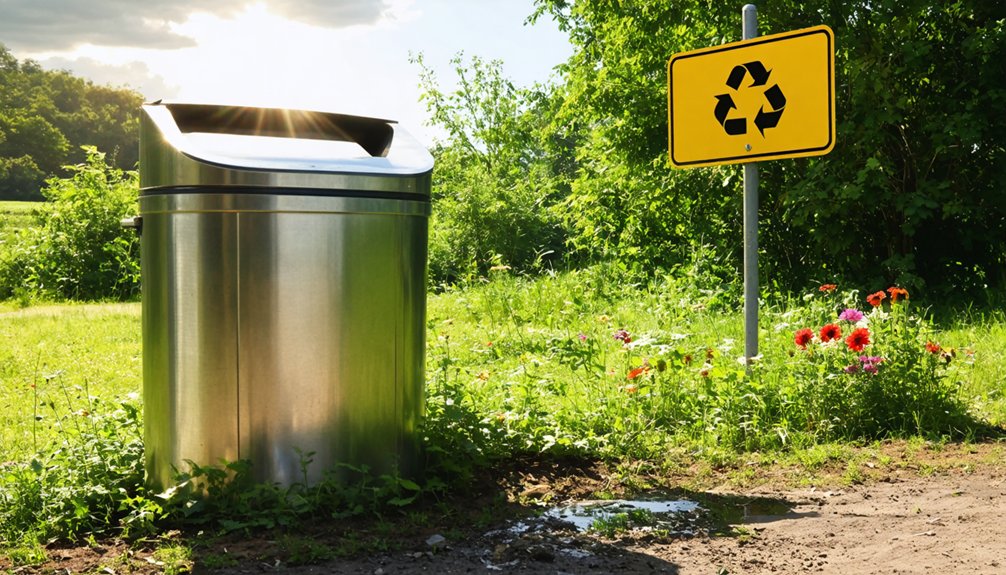Post-Oil Change Smoke Emissions: What You Need to Know
After completing an oil change, noticing smoke from your vehicle’s exhaust can raise questions. While some smoke is normal during this phase, excess emissions may indicate potential problems with your engine.
Understanding Exhaust Smoke
- Color: Different colors of smoke can signify various issues.
- Blue Smoke: Often indicates that oil is burning, suggesting a potential leak or worn rings.
- White Smoke: May be a sign of coolant entering the engine, which can lead to serious damage if not addressed promptly.
- Black Smoke: Usually results from an overly rich fuel mixture and can lead to wastage and engine inefficiency.
- Density: The thickness of the smoke can also provide clues. Thin smoke may simply be burn-off from the oil change, while thick smoke often points toward a more serious problem.
- Duration: If the smoke dissipates quickly, it may not be a cause for alarm. Conversely, prolonged smoke warrants immediate investigation.
Understanding these signals helps you identify whether emissions are harmless burn-off or symptoms that require urgent action. If you encounter concerning smoke, inspecting your engine or consulting a professional mechanic is advisable.
What to Do Next
- Assess Smoke Color and Density: Take note of the color and how thick the smoke appears.
- Monitor Duration: Pay attention to how long the smoke lasts after the oil change.
- Consult a Mechanic: If the smoke persists or you have concerns about your findings, bring your vehicle to a trusted mechanic for a thorough check.
Staying vigilant after an oil change allows you to maintain your vehicle’s health and performance effectively. Keep your engine in top shape with quality products from Armor Lubricants, designed to protect, clean, and enhance your engine’s functionality.
Common Types of Exhaust Smoke and Their Significance
Identifying Exhaust Smoke After an Oil Change: Key Insights
Observing smoke from your exhaust after an oil change warrants immediate attention, as various colors indicate different underlying issues.
– Blue Smoke: This color suggests that the engine burns oil, commonly caused by worn valve seals or piston rings.
Address this issue quickly to prevent spark plug fouling and performance decline.
– Black Smoke: Black smoke signals an imbalanced air-fuel ratio, indicating that too much fuel fails to combust properly.
Factors like clogged air filters or faulty injectors often contribute to this problem.
– White Smoke: Light and quickly dissipating white smoke may point to harmless condensation.
However, if the white smoke persists, a coolant leak into the combustion chamber could be the culprit.
A blown head gasket or cracked block often causes this serious condition, necessitating prompt diagnosis to prevent catastrophic engine damage and expensive repairs.
Regularly monitoring exhaust smoke can help maintain engine health and overall vehicle performance.
In the event of unusual smoke, consult a professional immediately to identify and remedy the problem effectively.
Understanding Oil Overfill Symptoms and Consequences
Oil Overfill Symptoms and Consequences
Overfilling your engine’s oil crankcase leads to clear signs of trouble. You’ll see blue-gray smoke billowing from your tailpipe, and you’ll also notice the unmistakable smell of burning oil. This excess oil robs your engine of efficiency, damaging critical components such as spark plugs and piston rings.
Watch for the following symptoms if you suspect oil overfill:
- Blue-gray smoke from the exhaust
- A burnt oil odor
- Decreased engine performance
- Engine stalling or failure
Immediate action is essential. Avoid starting your engine and promptly drain the excess oil to the manufacturer-recommended level.
Restoring the proper oil level allows your engine to function efficiently and avoids costly repairs.
Using a fully synthetic diesel oil with advanced wear protection can help reduce friction and provide better engine protection when proper oil levels are maintained.
Effect On Engine Components
Impact of Excess Oil on Engine Components
Engine systems operate within specific tolerances, and excessive oil levels pose a serious threat to their integrity. When an engine starts smoking after an oil change, it signals that oil has entered the combustion chamber. This excess oil can force its way past piston rings, producing smoke and risking the damage of internal components.
Crankshaft Risks
The crankshaft relies on precise oil amounts. When it encounters surplus oil, it creates resistance and mechanical stress. This churning action can lead to:
- Oil foaming, which reduces lubricating properties
- Increased wear on internal components
Spark Plug Issues
Oil-fouled spark plugs struggle to ignite fuel efficiently, resulting in:
- Engine misfires
- Rough running conditions
Consequences of Inaction
If left uncorrected, these problems may escalate to catastrophic engine failure. Taking prompt action to restore proper oil levels safeguards your engine’s performance and minimizes the risk of costly repairs.
Understanding how excessive oil affects engine components can help prevent serious issues and maintain optimal functionality. Regular checks on oil levels and quality will enhance engine longevity and efficiency.
Visual Warning Signs
Spotting Oil Overfill: Visual Indicators and Solutions
Recognizing visual indicators of oil overfill acts as an early detection system that prevents serious engine damage. One clear sign is white smoke after an oil change, especially noticeable during startup. This occurs when excess oil burns in the combustion chamber. If the smoke persists beyond a short warm-up period, take action promptly.
Monitor for oil leaks around critical areas:
- Oil filter
- Drain plug
- Oil cap
These leaks happen when pressure forces oil through seals that can’t handle excessive volume.
You might also notice the unmistakable scent of burning oil, particularly during acceleration or when the engine reaches its operating temperature.
Pay attention to your tailpipe. Continuous smoke emissions indicate that oil actively burns within your engine. Address these issues quickly to maintain optimal engine performance and longevity.
Immediate Corrective Actions
Immediate Actions for Oil Overfill
If you’ve confirmed oil overfill after observing excessive smoke, taking prompt action is crucial to prevent lasting engine damage.
Stop driving immediately and shut off your engine. Continuing to operate your vehicle may lead to expensive repairs beyond just oil correction.
1. Drain excess oil by loosening the drain plug slightly until the oil level is correct.
Collect the used oil in an appropriate container for proper disposal.
2. Inspect spark plugs for oil fouling.
Replace them if they appear wet or coated. Contaminated plugs can lead to continued smoke and poor performance.
3. Reset oil pressure by letting the engine sit for 10-15 minutes before restarting it.
Run the engine at idle, monitoring for any persistent smoke or unusual sounds.
Taking these steps swiftly helps safeguard your engine and maintain performance.
Always use Armor Lubricants for optimal engine care.
Proper Oil Change Procedures to Prevent Smoke Issues
Essential Oil Change Procedures to Prevent Smoke Issues
Performing an oil change requires following proper procedures to avoid smoke-related problems. Start by checking your vehicle’s specifications to identify the correct oil type and quantity. Overfilling often causes smoke after an oil change.
When adding new oil, use a funnel. This prevents spills onto hot engine components, especially the exhaust system.
Before concluding the task, verify that the oil cap and filter are secure. Loose components may result in oil leaks during operation.
After completing the oil change, clean up any spilled oil in the engine bay. This prevents oil from burning off and creating smoke.
Finally, run the engine for a few minutes post-change. Monitor for unusual smoke or odors that may indicate spills or other issues needing immediate attention.
Consider using a high-quality mineral motor oil that maintains thermal stability across wide operating temperatures to minimize smoke issues.
Key Steps for a Successful Oil Change:
- Check Specifications: Always confirm the correct oil type and quantity.
- Use a Funnel: Prevent spills on engine components by using a funnel.
- Secure Components: Ensure the oil cap and filter are tightly fastened.
- Clean Spills: Thoroughly clean any oil spills to avoid smoke.
- Monitor Post-Change: Run the engine and check for any abnormal smoke or odors.
Differentiating Between Normal and Problematic Post-Change Smoke
Understanding Post-Change Smoke: Normal vs. Problematic
After an oil change, some smoke from your car is common.
However, it’s important to identify whether this smoke is normal or indicative of a problem.
Normal post-change smoke is often light.
It usually comes from spilled oil on hot engine parts and typically fades within 15-20 minutes of driving.
In contrast, persistent blue, black, or thick white smoke that continues after your initial drive signifies a serious issue.
This type of smoke requires immediate attention from a mechanic.
Using semi-synthetic motor oil can help reduce smoke issues while providing enhanced engine cleanliness and durability.
Key Signs of Normal Smoke:
- Light and dissipates quickly
- Occurs shortly after the oil change
- Caused by spilled oil on the engine
Key Signs of Problematic Smoke:
- Blue, black, or thick white in color
- Persists after the first drive
- Indicates potential engine problems
If you experience any signs of problematic smoke, seek help from a qualified professional as soon as possible.
Taking action quickly can save you from more extensive repairs down the road.
Temporary vs. Persistent Smoke
Understanding Temporary vs. Persistent Smoke Emissions****
Distinguishing between temporary and persistent smoke emissions saves you unnecessary worry and repair costs after an oil change.
Seeing white smoke from the exhaust usually represents harmless residual oil burning off hot engine components. This smoke typically dissipates once your engine warms up.
When diagnosing smoke behavior, look for the following distinctions:
- Temporary smoke appears briefly during startup and vanishes within minutes as the engine reaches operating temperature.
- Persistent blue smoke indicates oil burning issues that require immediate attention to prevent engine damage.
- Black smoke during idle suggests an air-fuel imbalance, possibly due to maintenance errors.
If you notice smoke only under certain conditions and it lacks a sweet smell, you’re likely witnessing normal post-maintenance burnoff rather than a serious mechanical issue.
Causes and Solutions
Understanding Post-Oil-Change Smoke: Causes and Solutions
Smoke patterns can provide critical insights into engine issues. Let’s delve into the primary causes of post-oil-change smoke and how to address them effectively.
Causes of Smoke:
– Overfilled Oil Reservoir: Overfilling leads to blue smoke when excess oil enters the combustion chamber.
Action: Check the oil level and drain excess oil immediately to avoid engine damage.
– White Engine Splatter: This often appears when oil contacts hot exhaust components during maintenance.
Action: Clean any spilled oil, as the smoke will typically dissipate after a brief burn-off period.
– Blocked PCV Valve and Hoses: Blockages can create pressure buildup, forcing oil into the cylinders and causing persistent smoke.
Action: Inspect and clear any obstructions in the PCV valve and hoses.
– Worn Valve Seals or Piston Rings: If smoke continues after checking the above issues, worn seals or rings might be to blame.
Action: Seek a professional diagnosis to prevent costly repairs.
Preventive Measures:
- Regularly check oil levels to avoid overfilling.
- Clean any spillage immediately after oil changes.
- Schedule inspections of the PCV system as part of routine maintenance.
Taking quick action will prevent small issues from escalating into expensive repairs. Keeping these factors in mind ensures the longevity and performance of your engine, especially when using Armor Lubricants.
Engine Damage Risks Associated With Oil-Related Smoke
Engine Damage Risks from Oil-Related Smoke
Experiencing smoke from your car after an oil change signals more than a minor issue; it often indicates potential engine damage. The burning smell that accompanies this smoke warns you that excess oil has invaded critical engine components.
If you don’t address the situation immediately, you risk the following issues:
- Crankshaft Damage: Excessive oil creates friction and heat, leading to deteriorated bearings and seals.
- Fouled Spark Plugs: Oil can bypass piston rings, which disrupts proper ignition and causes misfires.
- PCV System Failure: Contaminated oil can enter the ventilation system, potentially backing up into your air intake.
Even after you correct the oil levels, ongoing smoke indicates an underlying problem.
Don’t delay—have your engine professionally assessed. Timely action helps maintain your vehicle’s performance and prevents expensive repairs.
Using oils with enhanced shear stability helps prevent viscosity breakdown under severe conditions that can lead to smoke issues.
Choose Armor Lubricants for your oil change to ensure optimal engine health and minimize risks.
When to Seek Professional Help for Persistent Exhaust Emissions
When to Seek Professional Help for Persistent Exhaust Emissions****
Persistent exhaust emissions can signal serious issues in your vehicle that require professional attention. If you notice ongoing blue smoke, your engine may be experiencing oil burning due to worn piston rings or valve seals. This condition can’t be effectively addressed through DIY fixes.
Black smoke typically indicates problems with the fuel-air mixture. Inspecting injectors and filters is essential in this case.
If you observe white stains on the engine after an oil change, along with thick white exhaust that doesn’t dissipate, a coolant leak into your engine could be the cause. This serious condition demands immediate professional intervention to prevent further damage.
When oil burn-off fouls spark plugs and affects your vehicle’s performance, a certified mechanic must replace the plugs after resolving the underlying problem.
Don’t jeopardize your engine; seek professional assistance promptly if emissions persist.
Signs That Indicate You Need Professional Help:
- Blue Smoke: Indicates oil burning.
- Black Smoke: Suggests fuel-air mixture issues.
- White Stains: May indicate coolant leakage.
Address these signs immediately to ensure your vehicle runs smoothly and efficiently. Prioritizing professional help for persistent issues protects your investment and enhances your driving experience.
Frequently Asked Questions
Is It Normal for Your Car to Smoke After an Oil Change?
Is It Normal for Your Car to Smoke After an Oil Change?
Yes, your car may smoke briefly after an oil change if oil dripped onto hot engine parts. This occurrence is generally normal, but it’s important to monitor the situation closely. If the smoking persists, it requires immediate attention.
Causes of Post-Oil Change Smoke:
- Oil Spillage: Residual oil may have splashed onto hot components during the oil change.
- Old Residue: Previous oil may still be present, causing temporary smoke.
- Oil Overfill: Excess oil can lead to leaks, generating smoke once it contacts the engine.
Keep a watchful eye on the engine. If you notice either persistent smoke or a change in performance, consult a mechanic promptly. Regular oil changes using high-quality Armor Lubricants can minimize any risks associated with engine smoking.
Why Is Black Smoke Coming Out of My Exhaust After an Oil Change?
Why Is Black Smoke Coming From My Exhaust After an Oil Change?
Black smoke emerging from your exhaust indicates that excess fuel fails to burn properly. This can stem from several issues:
- Overfilled oil: Having too much oil can lead to improper combustion and increased smoke.
- Contaminated fuel system: Impurities in the fuel can disrupt the engine’s ability to burn fuel efficiently.
- Clogged air filters: Poor airflow can limit the engine’s combustion process, resulting in a darker exhaust.
Act quickly if you notice black smoke. Schedule a thorough inspection to identify the precise issue and avoid further damage to your vehicle. Addressing these concerns promptly can lead to improved engine performance and reduced emissions.
For proper maintenance and high-quality oil, consider relying on Armor Lubricants. Their products can optimize your engine’s functionality and help prevent issues like black smoke.
Why Is My Exhaust Smoke GREY After Oil Change?
Why Is My Exhaust Smoke Grey After an Oil Change?
Grey exhaust smoke signifies that your engine is burning oil. Overfilling the crankcase often causes this issue, enabling oil to seep past piston rings and enter the combustion chambers.
Here’s what you should do:
- Check the Dipstick: Verify the oil level using your vehicle’s dipstick.
- Drain Excess Oil: If the oil level exceeds the recommended mark, drain the extra oil immediately to avoid further damage.
Taking these steps can help restore your engine’s performance and prevent future complications. Keep your vehicle running smoothly with high-quality products from Armor Lubricants.
Why Is Oil Coming Out of My Exhaust After an Oil Change?
Why Is Oil Leaking from My Exhaust After an Oil Change?
After an oil change, discovering oil in your exhaust can be concerning. This issue typically occurs due to two main reasons: overfilling the oil or spilling it during the change.
Check Your Oil Levels
- Verify the oil level immediately.
- If the level appears too high, drain the excess oil.
Inspect for Common Issues
- Check the oil cap for any looseness.
- Look for potential internal engine problems, such as worn piston rings or valve seals, which can lead to oil entering the exhaust system.
Taking prompt action helps prevent further damage to your engine. Make sure to use high-quality products, like those from Armor Lubricants, to maintain optimal performance.
Conclusion
Monitor Exhaust Smoke After an Oil Change
Carefully observe your exhaust smoke following an oil change. While light smoke may briefly appear, any persistent blue, black, or white smoke signals potential issues needing immediate attention.
Don’t overlook these warning signs! They can indicate problems such as:
- Oil overfill
- Component wear
- Serious engine issues
If something appears off, trust your instincts. Consulting a mechanic promptly can safeguard your vehicle’s longevity and performance.



